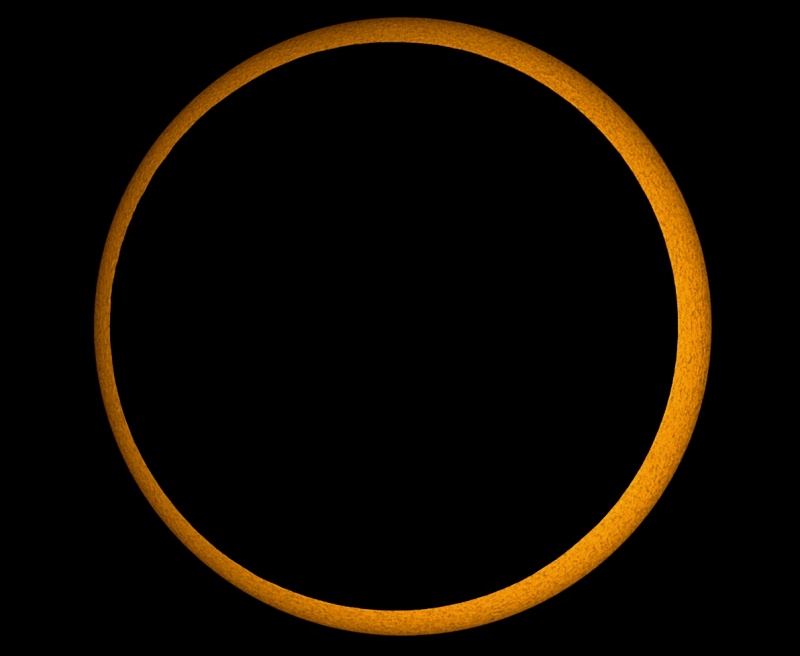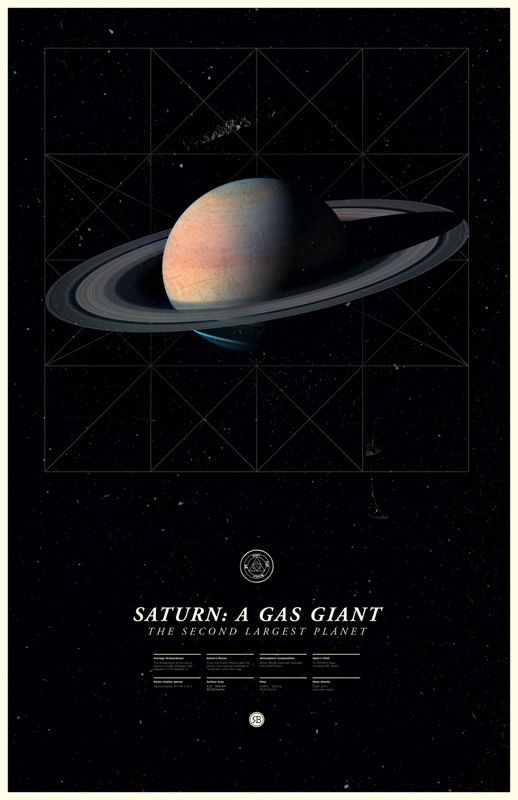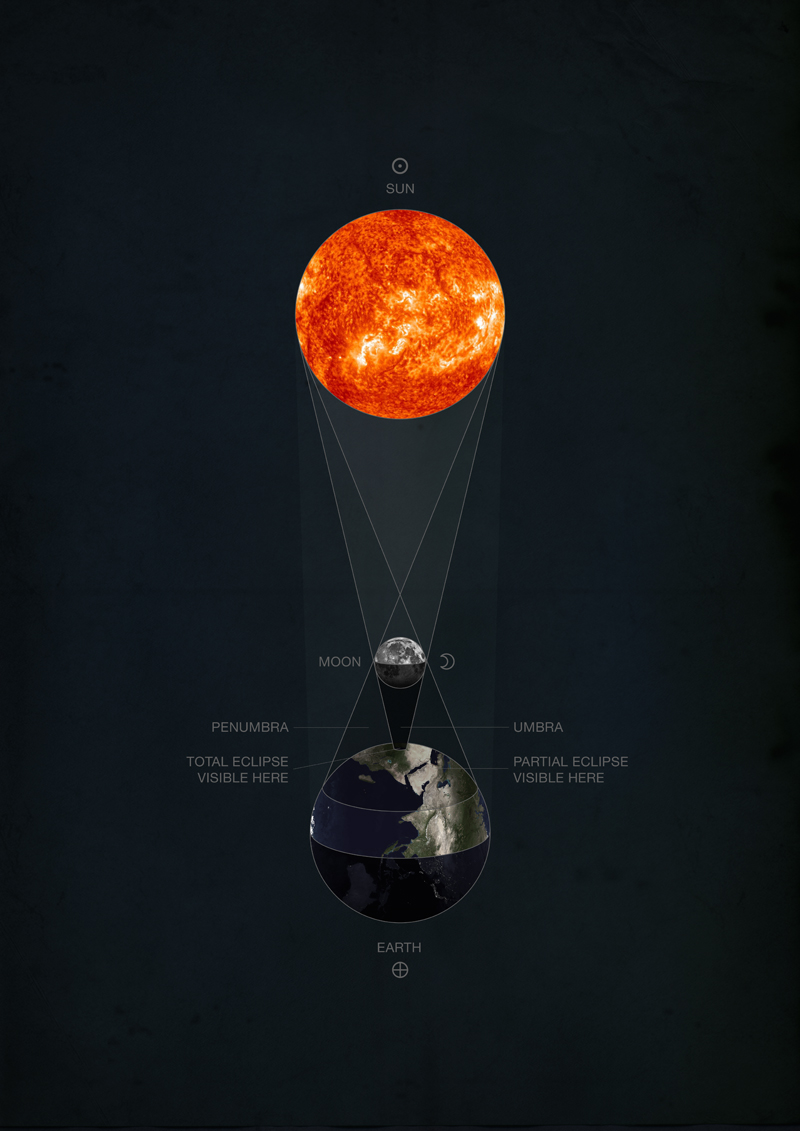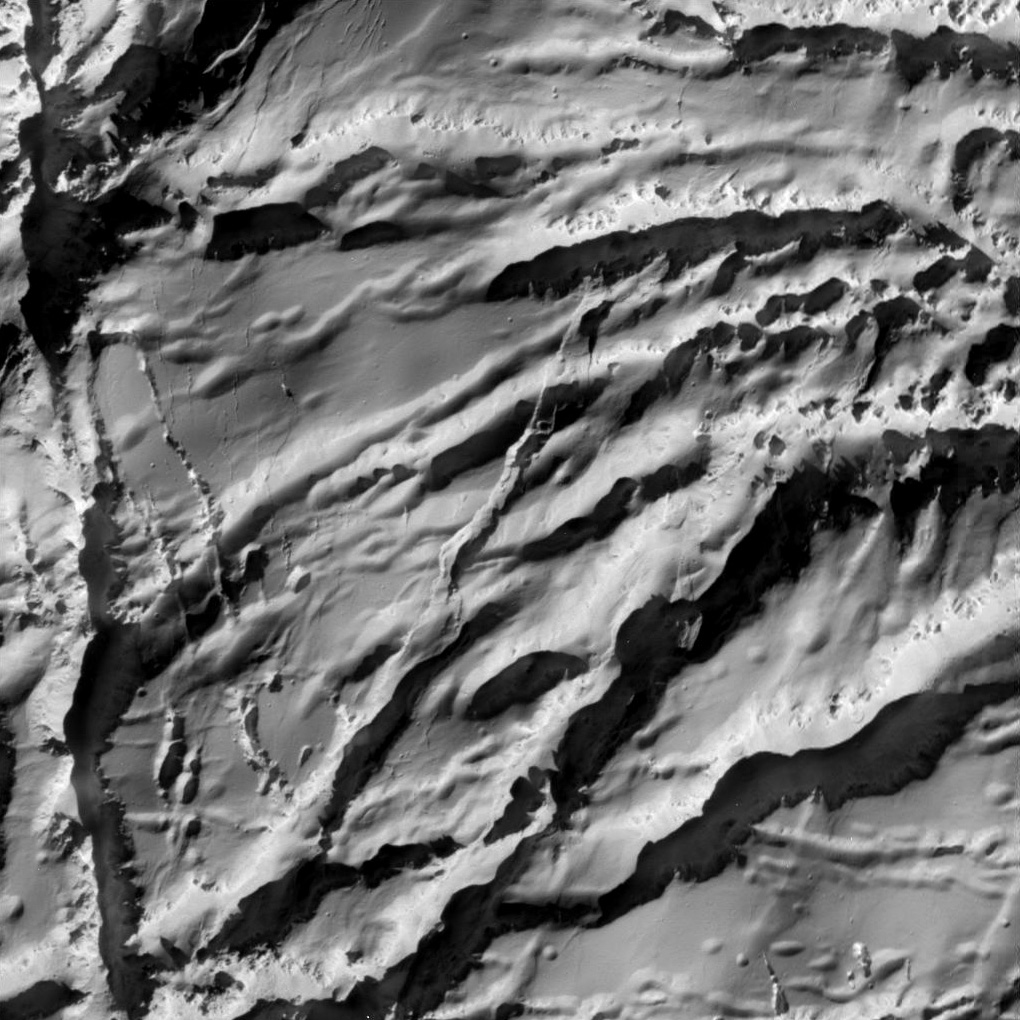An X Asteroid?
 What NASA thinks we might be looking at here is an asteroid that was recently shattered by another asteroid, giving it a comet-like appearance. It stays within the asteroid belt, so it cannot be a comet as those objects are known to be dusty ice-balls that stay in highly elliptical orbits around the Sun.
What NASA thinks we might be looking at here is an asteroid that was recently shattered by another asteroid, giving it a comet-like appearance. It stays within the asteroid belt, so it cannot be a comet as those objects are known to be dusty ice-balls that stay in highly elliptical orbits around the Sun.
Ross Berens Ruins My Dreams
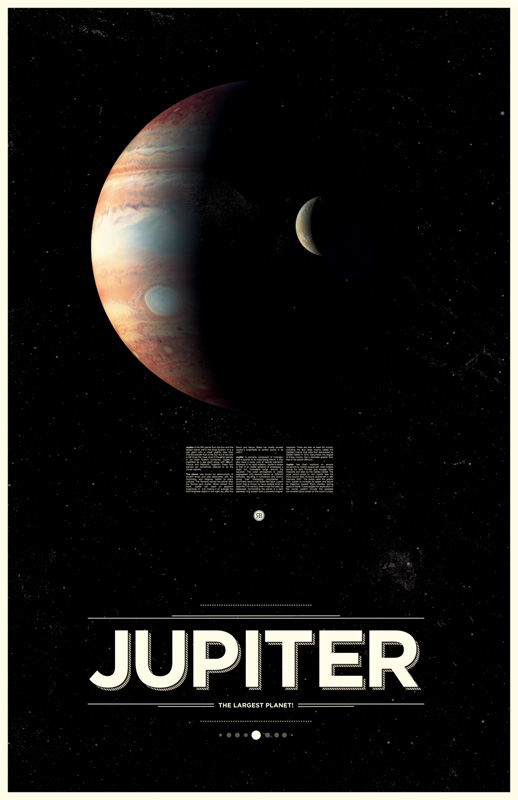 I had really always thought it would be so cool to do a poster set with great design for each of the planets. I actually started a design for the Cassini at Saturn mission, but have yet to complete it. Sure enough someone comes along and knocks the whole system out in one fantastic series. Beat me to it!
I had really always thought it would be so cool to do a poster set with great design for each of the planets. I actually started a design for the Cassini at Saturn mission, but have yet to complete it. Sure enough someone comes along and knocks the whole system out in one fantastic series. Beat me to it!
The funny thing about doing the whole Solar System is that you will not likely have too many takers for Uranus or even Pluto. But the design on some of these makes it pretty tempting to grab just for the overall design. I can’t wait to email Ross when New Horizons gets to Pluto and it looks nothing like what is shown here. A gorgeous inclusion of the hypothetical ring some expect to find when we get there, but where are the 3 moons?
I would be a fool to not include Saturn. The exclusion of the Galileans at Jupiter, no Charon on the Pluto poster and the absence of Titan here on the Saturn poster... I wonder if I sense a moon series coming? Put me down for a copy of Io.
The Art of Michael Paukner
 Admit it, deep down inside we (or at least I) all secretly want to explore the heavens untethered from the Earth and unlock all the mysteries of the universe. Perhaps that is why the beautiful info-graphic art of Michael Paukner is so appealing. His work focuses on many scientific themes such as space exploration, as seen in this poster of the Solar System as it is known today (above), to more conspiratorial "junk science" theories like numerology, the Doomsday Planet (follows the link) and that crazy Aztec calendar that ends in 2012.
Admit it, deep down inside we (or at least I) all secretly want to explore the heavens untethered from the Earth and unlock all the mysteries of the universe. Perhaps that is why the beautiful info-graphic art of Michael Paukner is so appealing. His work focuses on many scientific themes such as space exploration, as seen in this poster of the Solar System as it is known today (above), to more conspiratorial "junk science" theories like numerology, the Doomsday Planet (follows the link) and that crazy Aztec calendar that ends in 2012.
My impression is that much of the latter work is for fun and the themes provide for some really engaging imagery. These (and a few other images) are available from his site in poster form (for those of you with barren walls begging for inspiration).
Click above to see Michael’s info-graphic on how an eclipse works. This has to be the most attractive depiction of this phenomenon ever attempted. If you want to see more of his work apart from what is on sale at his site, you need to check out this set in his flickr feed which includes some of his more bizarre designs.
Could the Phoenix Rise Again?
 It seems pretty unlikely to happen, but starting on January 18 the Mars Odyssey Orbiter will begin listening for signals from the Phoenix. The mission ended last November as the Sun became too dim to continue to provide the solar cells enough energy to keep Phoenix warm and operable. The lander was never intended to survive a Martian winter and has most likely been devastated by the extremes and unlike the rovers, Phoenix is in a polar region which makes those extremities of a Martian winter even greater. Now with the end of Martian winter comes the addition of more sunlight, comparable warmth and therefore a reason to think maybe we can grab enough power to wake up and resume operations. So nobody really expects a technical miracle to take place this week, but in the unlikely event that the lander has survived… the science teams already have a plan in place to take that advantage.
It seems pretty unlikely to happen, but starting on January 18 the Mars Odyssey Orbiter will begin listening for signals from the Phoenix. The mission ended last November as the Sun became too dim to continue to provide the solar cells enough energy to keep Phoenix warm and operable. The lander was never intended to survive a Martian winter and has most likely been devastated by the extremes and unlike the rovers, Phoenix is in a polar region which makes those extremities of a Martian winter even greater. Now with the end of Martian winter comes the addition of more sunlight, comparable warmth and therefore a reason to think maybe we can grab enough power to wake up and resume operations. So nobody really expects a technical miracle to take place this week, but in the unlikely event that the lander has survived… the science teams already have a plan in place to take that advantage.
Above is an impressive mosaic image of the frozen water that was found beneath the lander later in the mission. It is thought that the thrusters (which enable a soft surface landing) kicked away the top soil on the way down, revealing a sheet of frozen ice water right underneath the lander’s feet.
Prometheus, Small Moon of Saturn
 Prometheus is the small moon that shepherds Saturn’s outer “F” ring and causes those crazy waves in the particles that make up the ring itself. The phenomenon has been the theme of at least 3 different animations here on wanderingspace.net. The image above is what that small moon in those animations looks like from 60,000 km taken by Cassini on Dec 26, 2009.
Prometheus is the small moon that shepherds Saturn’s outer “F” ring and causes those crazy waves in the particles that make up the ring itself. The phenomenon has been the theme of at least 3 different animations here on wanderingspace.net. The image above is what that small moon in those animations looks like from 60,000 km taken by Cassini on Dec 26, 2009.
Back-Burner Image: Saturn Clouds
International Year of Astronomy 2009 Posters
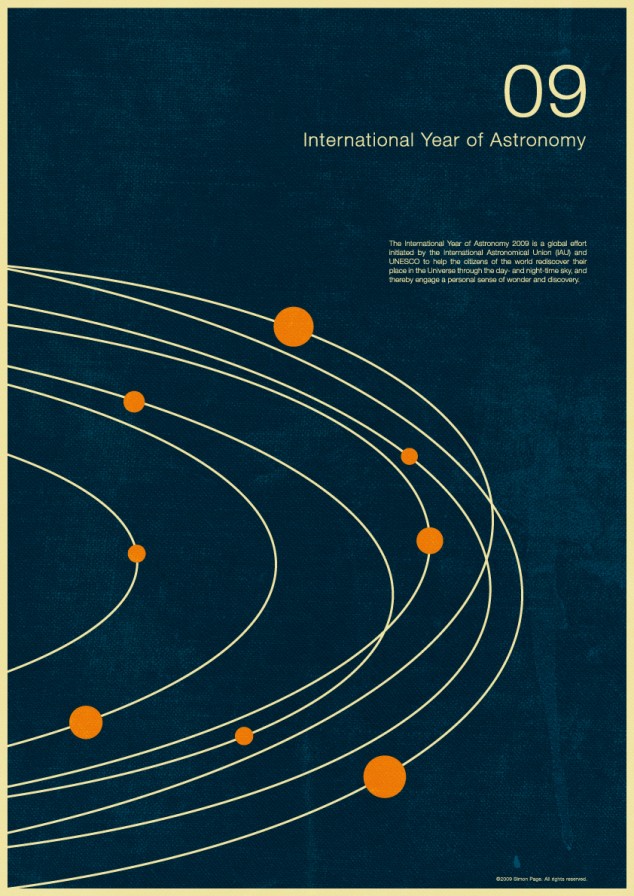 Beautiful set of posters by Simon Page. There are 10 total. See them all here.
Beautiful set of posters by Simon Page. There are 10 total. See them all here.
GOOD on NASA Missions
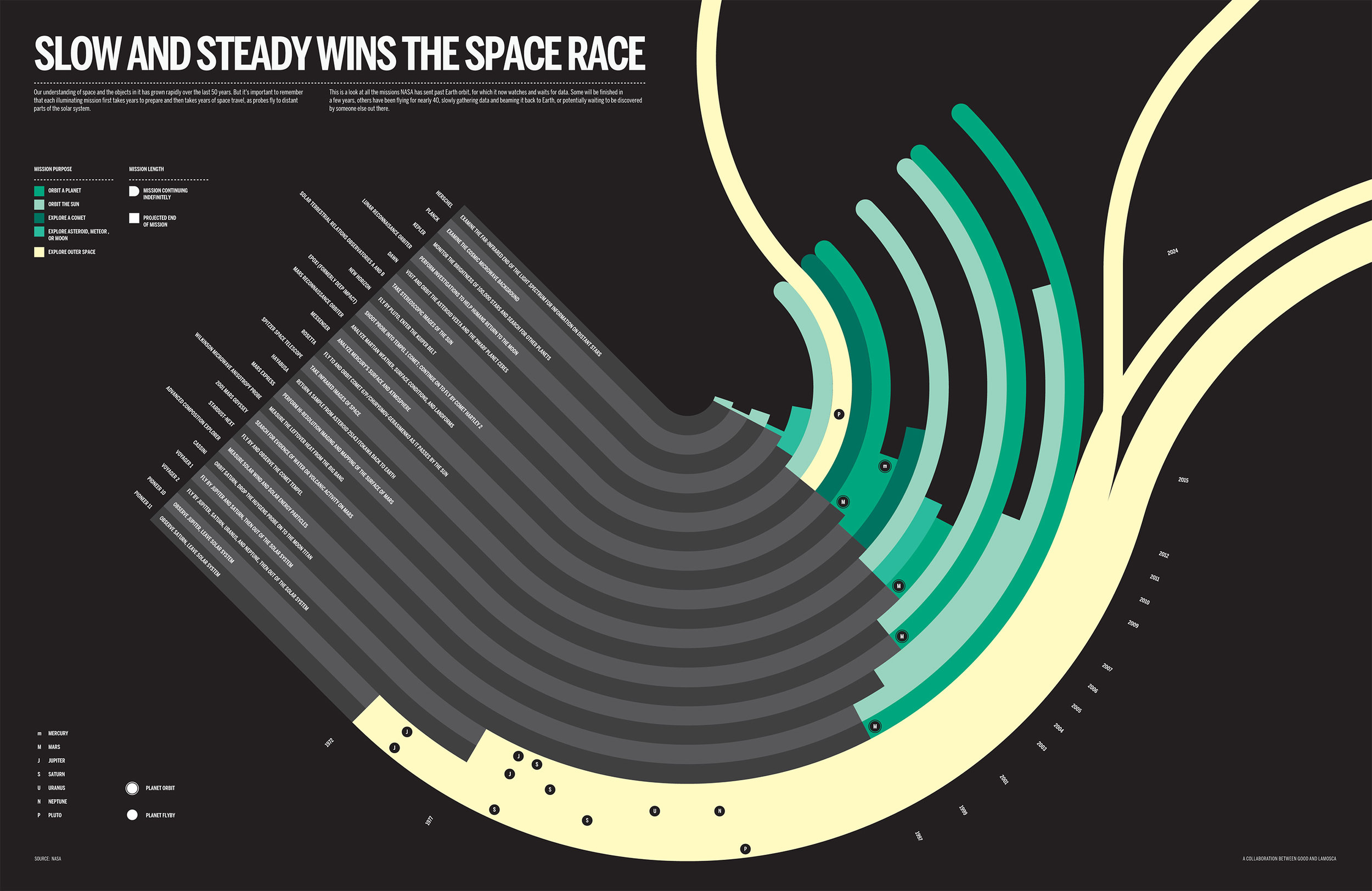 The site good.is has this great section called “Transparency” where they illustrate complex and hard to understand topics. Check out this magnificent chart of all the probes that NASA has sent past Earth orbit.
The site good.is has this great section called “Transparency” where they illustrate complex and hard to understand topics. Check out this magnificent chart of all the probes that NASA has sent past Earth orbit.
Through the Plumes!
 Gordan of course.
Gordan of course.
The Fountains of Enceladus
 This has to be one of the greatest, most alien images ever taken from robotic spacecraft. It approaches how I might expect Enceladus to be depicted if it were in a Star Trek movie. As if the plumes at the edge of the disk back-lit by the Sun were not enough… the trail of smaller plumes breaking through the darkness is absolutely fantastic. The above is a real image but the color is an artistic interpretation by someone would know. Considering how little color is usually found at Enceladus, we can image this is really as good as if it were compiled from a full RGB set of filters. A larger monotone of the same image here.
This has to be one of the greatest, most alien images ever taken from robotic spacecraft. It approaches how I might expect Enceladus to be depicted if it were in a Star Trek movie. As if the plumes at the edge of the disk back-lit by the Sun were not enough… the trail of smaller plumes breaking through the darkness is absolutely fantastic. The above is a real image but the color is an artistic interpretation by someone would know. Considering how little color is usually found at Enceladus, we can image this is really as good as if it were compiled from a full RGB set of filters. A larger monotone of the same image here.
This image was compiled by Astro0 on unmannedspaceflight.com. Also one of the best views staring down the length of one of Enceladus’ “tiger stripes”.
Ever so sharp look straight down on the South Pole of Enceladus from 1,855 km.
Rosetta Skims Earth
The Plumes of Enceladus in Color (kind of)
 Like the Saturnshine image posted earlier, this is only an estimation of a true color image. Five sources were used to compile this image; clear 1, clear 2, red, blue and another clear filtered image was used to replace the missing green to round it out (this work by S_Walker from unmannedspaceflight.com). We then additionally cleaned out artifacts from the original images and blurred the surrounding geyser haze largely to eliminate posterization noise.
Like the Saturnshine image posted earlier, this is only an estimation of a true color image. Five sources were used to compile this image; clear 1, clear 2, red, blue and another clear filtered image was used to replace the missing green to round it out (this work by S_Walker from unmannedspaceflight.com). We then additionally cleaned out artifacts from the original images and blurred the surrounding geyser haze largely to eliminate posterization noise.
This is the first time anyone has been able to attempt a true color view of the geysers with the availability of the red and blue images. Also a bonus is the considerable amount of Saturnshine seen on the dark side of the moon.
Enceladus at 9,988 km
Dueling Enceladian Light Sources
 Gordan U compiled this image of Enceladus lit both by Sun and Saturnshine. The side lit by reflected light from Saturn is in infrared and in the original appeared in a green hue. I took some liberties and imaged it as I would imagine it really would appear to the eye in Saturn’s more orange/yellow hues.
Gordan U compiled this image of Enceladus lit both by Sun and Saturnshine. The side lit by reflected light from Saturn is in infrared and in the original appeared in a green hue. I took some liberties and imaged it as I would imagine it really would appear to the eye in Saturn’s more orange/yellow hues.
Worth noting tomorrow the images are due in from Cassini’s closest approach yet through its plumes. Hoping for some amazing material.
Umbriel, Moon of Uranus
 A view of Umbriel from Voyager 2 in 1986. Thanks to Ted Stryk who specializes in re-imaging images from old missions with today’s advanced computing. There are few images of this place and no missions planned any time soon… so these may be all we ever see of it in our lifetime.
A view of Umbriel from Voyager 2 in 1986. Thanks to Ted Stryk who specializes in re-imaging images from old missions with today’s advanced computing. There are few images of this place and no missions planned any time soon… so these may be all we ever see of it in our lifetime.
The most interesting detail revealed in these images is the bright white disk that appears at the top of this image which is actually at the equator. Since the Uranian system is turned on its side almost 90 degrees to the rest of the solar system, Voyager passed all of its moons at nearly the same time. The orientation means we are actually seeing the southern pole nearly straight on in both these images. Such an unusually high-contrast feature reminds one of Saturn’s strange moon Iapetus. It could be the same phenomenon that made Iapetus look the way it does may have also been at work on Umbriel.
Daily Galaxy
Not at all meant as a “gotcha” at all… but I just love when I take the time to clean these up and people start using these my clean-ups over the ones officially released. Daily Galaxy posted my Comet Halley clean up and I knew I recognized it as my handy work. They most likely got it off Google image search.
Enceladus: All In One View
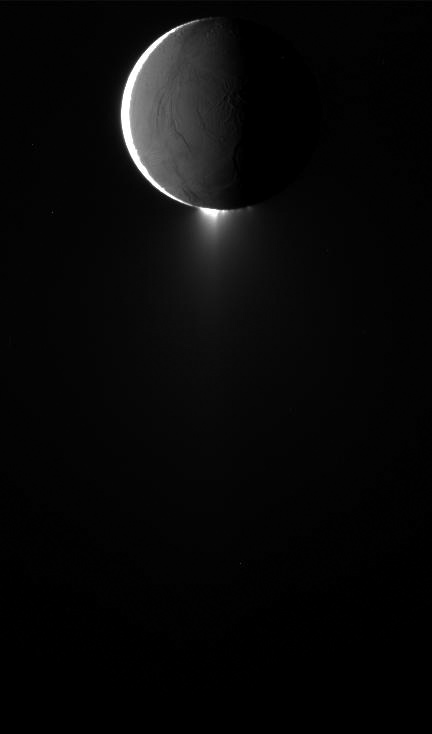 Seen in this image are Enceladian surface features and it’s geysers in action. This is normally not possible as the geysers are not normally visible unless they are back-lit… which they are in this image. The difference is that the surface details of Enceladus are being lit by an additional light source: Saturnshine. This makes for a fairly rare view where both details can be seen in one view.
Seen in this image are Enceladian surface features and it’s geysers in action. This is normally not possible as the geysers are not normally visible unless they are back-lit… which they are in this image. The difference is that the surface details of Enceladus are being lit by an additional light source: Saturnshine. This makes for a fairly rare view where both details can be seen in one view.
50 Years of Space Exploration Map
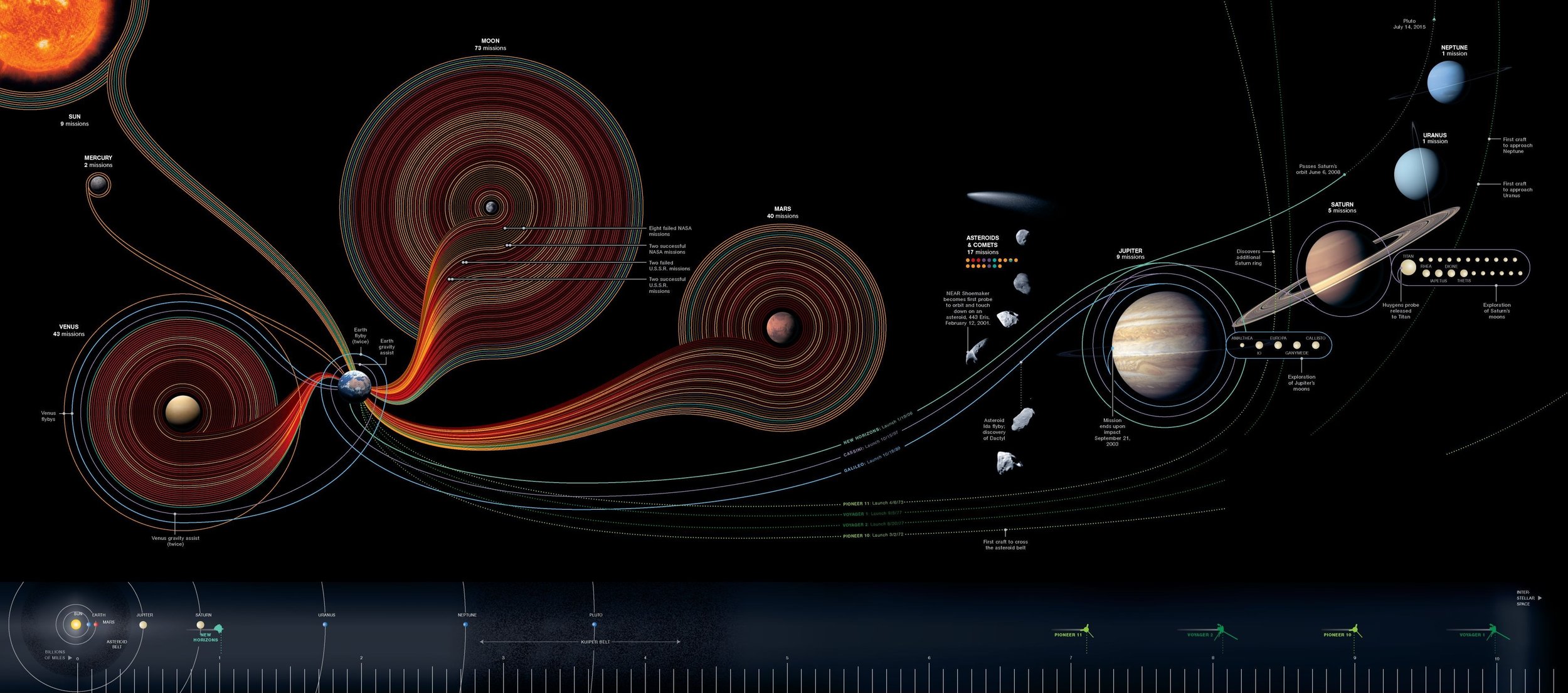 This is so nice, but I am furious that I didn’t get to design this. This is Information design at it’s best naturally by National Geographic. You can see 50 years of robotic planetary exploration at a glance. It even includes failed missions represented by darker desaturated lines. As far as I can tell the cream colored lines are US and the red ones are Soviet. Interesting to see how many of those lines go dark around Mars.
This is so nice, but I am furious that I didn’t get to design this. This is Information design at it’s best naturally by National Geographic. You can see 50 years of robotic planetary exploration at a glance. It even includes failed missions represented by darker desaturated lines. As far as I can tell the cream colored lines are US and the red ones are Soviet. Interesting to see how many of those lines go dark around Mars.
Now where does one purchase such a thing? Perhaps this month’s issue of NG? Here is the link to it on their site complete with zoom viewer and them some kind samaritan posted a hires version to flickr.
A Saturnian Aurora Captured
 Astro0 (a contributor to unmannedspaceflight.com) had been looking through a 159 frame set of images that showed a tiny portion of Saturn's sunlit limb. He animated it just to see the effect and happened upon a pretty nice animation of a Saturnian aurora (click here for the animation). Which is likely the first time we are seeing an aurora on another world so clearly animated.
Astro0 (a contributor to unmannedspaceflight.com) had been looking through a 159 frame set of images that showed a tiny portion of Saturn's sunlit limb. He animated it just to see the effect and happened upon a pretty nice animation of a Saturnian aurora (click here for the animation). Which is likely the first time we are seeing an aurora on another world so clearly animated.
To be clear… the spots that stand still in the animation are artifacts of the images. The streaks are stars seemingly flying by due to Cassini’s cameras being trained on one spot as it and Saturn itself are moving through space. Astro0’s blog can be found here and I suspect will soon feature a post with more details on the animation in the very near future.
